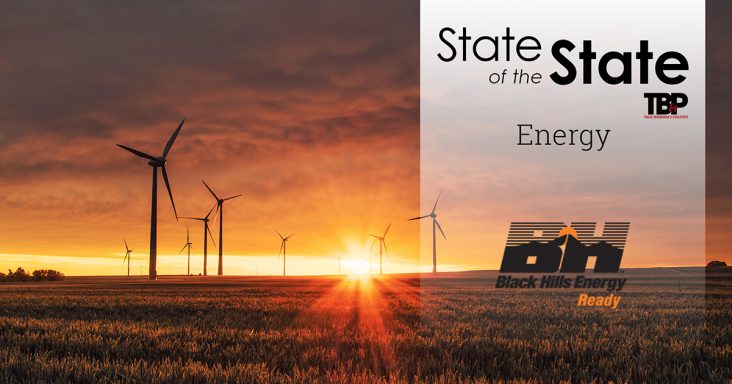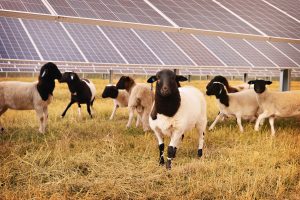State of the State 2022: Energy sector faces uncertainty, growth in solar capacity
by January 24, 2022 4:27 pm 1,052 views

Solar technology continues to be a driving force for advanced energy while the oil and gas industry faces uncertainty and price volatility amid the COVID-19 pandemic.
Rodney Baker, executive director for Arkansas Independent Producers and Royalty Owners Association, said the uncertainty that the industry faces in 2022 has impacted investments to expand production. The uncertainty includes new COVID variants affecting the economy and contributing to volatility in demand and price. It also includes new federal regulations.
At the onset of the pandemic, producers faced declining oil prices as demand fell with fewer motorists on the road. Following a record fall in prices, they have recovered as motorists returned and demand rose. Meanwhile, new federal regulations came to light when President Joe Biden announced clean energy goals shortly after being sworn into office in 2021. In Congress, other bills under debate could lead to further regulation, continuing to cloud the outlook for the industry in 2022.
Baker noted that consumers would be affected by the regulations, and they would come at a cost that would be evident at the fuel pump. The costs would put pressure on producers, especially smaller companies, said Baker, adding that the industry has worked to reduce emissions over the past decade.
“There’s a huge infrastructure out here in the oil and gas industry, and that infrastructure represents a lot of investment – thousands if not millions of jobs,” he said. “All of that has been impacted with changes that are going on.
“You can’t say that we’re going to change the way we do everything in the energy sector and get rid of hydrocarbons… and not impact the infrastructure… the people that are in that industry working. And you can’t do that without impacting the consumer.”
In Arkansas, no new oil or gas wells have been drilled in the past three years, he said. And with the uncertainty amid the pandemic and regulation, he expects the trend to continue. As a result, producers will spend more money to maintain existing wells. Well production is typically highest when wells are drilled, but Baker said producers can make investments to help to boost their efficiency. Still, without new wells being drilled, production is expected to fall.
According to the state Oil and Gas Commission, oil production declined from 7.93 million barrels in 2011 to 4.14 million barrels in 2020. Over the same period, gas production has fallen from about 1,100,000,000 mcf, or 1.1 trillion cubic feet, to more than 475,000,000 mcf, or 475 billion cubic feet.
With production reporting 60-90 days behind, September production represents the last full month total in 2021, said Lawrence Bengal, director of the commission. Between January 2021 and September, oil production was 3.09 million barrels. Over the same period, gas production was more than 335,000,000 mcf, or 335 billion cubic feet.
SOLAR GROWTH
The solar sector continues to add electricity generating capacity across residential, non-residential and utility segments in Arkansas. According to the Arkansas Advanced Energy Association, the solar capacity has risen by 2,314% to 521.5 megawatts in 2021, from 21.6 megawatts in 2016. In 2022, the capacity is projected to rise by 3,540% to 961 megawatts, from 26.4 megawatts in 2017. Compared to 2021, the capacity is projected to rise by 84% this year.

Lauren Waldrip, executive director of the Arkansas Advanced Energy Association, said the state is known for having some of the best net metering laws in the nation which have contributed to the significant growth numbers.
“We certainly considered the regular session in the legislature a big win,” she said. “I think that sound, stable policy is very important in enabling the continued adoption of advanced energy in Arkansas.”
She added that state regulators and legislators have “laid the groundwork” for this, benefitting businesses and allowing consumers to produce their own energy. She said grandfathering allows consumers to receive a 1:1 credit for what their systems produce, and the ratio is locked for 20 years.
“Even if that ratio is for some reason changed in the future, folks who adopt solar now are grandfathered in at that rate,” she said.
ELECTRIC VEHICLES, SCHOOLS
Over the next five years, Arkansas will receive $54 million to build electric vehicle charging stations as a result of the new $1.2 trillion infrastructure law, said Waldrip, noting Gov. Asa Hutchinson’s plans to increase the stations statewide. Also, nearly $34 million from the law is expected to support energy efficiency projects in Arkansas.
Such projects have played an important role in the state, said Waldrip, pointing to a more than $100 million project that the University of Arkansas for Medical Sciences recently completed and is projected to save $4.8 million annually.
“I think advanced energy is certainly something that has a significant economic impact,” she said. “Not only is it creating jobs, high paying jobs [amid] a pandemic, but it’s also saving consumers money and increasing bottom lines across Arkansas.”
Energy efficiency projects might stem from plans to upgrade heating and cooling systems, and more broadly include renewables, like solar, and efficient lighting. She noted that member companies, such as Powers of Arkansas and Entegrity, offer a broad range of energy efficiency products and services. Federal money, especially for schools, has helped to underwrite a lot of the costs, she said.
Waldrip also expects a rise in public-private partnerships as a result of recent legislation regarding infrastructure investments. The existing law allows state agencies, including higher education, to transfer the investment risk to private entities and be more efficient as the agencies won’t have to issue bonds or seek tax increases for the investments, such as new buildings, she said. It’s a lease-to-own agreement, said Waldrip, adding that cities and counties face similar infrastructure funding issues, but the law has yet to apply to them.
This year, Waldrip continues to expect growth in advanced energy, especially as users become more interested in it.
“We are continuing to expand our reach and expand the amount of folks who are interested in this conversation, realizing and understanding the significant economic impact that it can have across the board,” Waldrip said.
Editor’s note: Link here to connect to the State of the State section.
